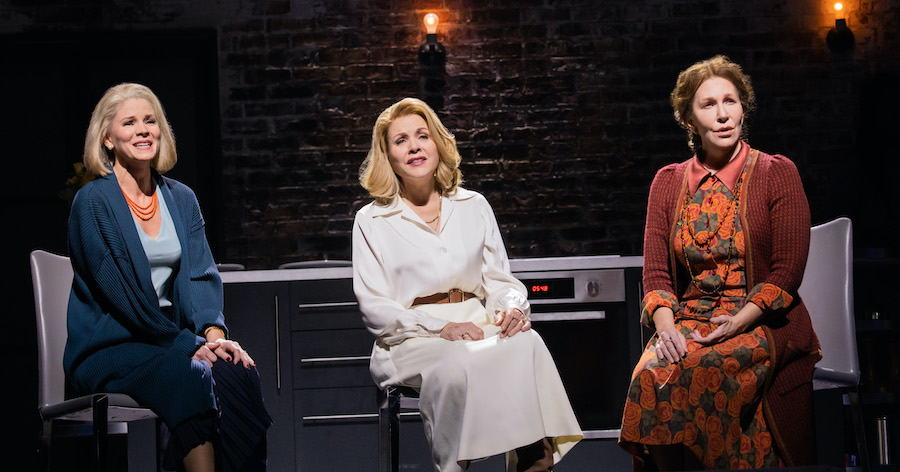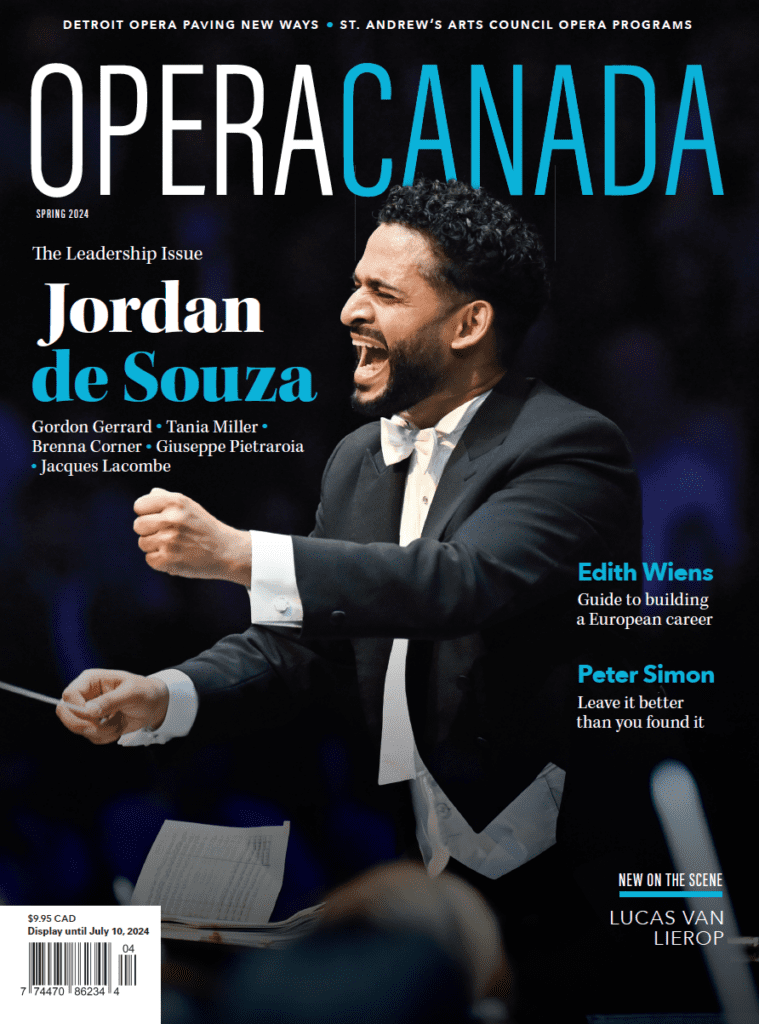Is Kevin Puts’s The Hours the best brand-new opera the Metropolitan Opera has presented in years? Probably.
It’s meticulously crafted, eminently singable, and makes for an eclectically influenced but almost consistently alluring listen. “Based on the book by Michael Cunningham and the Paramount Pictures film,” the program reads; but there’s another source that clearly merits credit. That’s Virginia Woolf’s Mrs. Dalloway (originally titled The Hours), the linchpin of the three temporally disparate, day-in-the-life narratives that coalesce in Cunningham’s Pulitzer Prize winner: Woolf writing her novel in 1923; a Los Angeles housewife reading it in 1949; and in 1999 New York, an upper-crust book editor uncannily echoing the life trajectory of Woolf’s nostalgia-bound heroine. Greg Pierce’s libretto deftly juggles the three stories, letting them overlap for the occasional ensemble: and Puts’s closing trio, finally bringing the protagonists together centre stage, is a beautifully time-stopping five minutes of music. Before that, there are uneven stretches—the whole act 2 bird-funeral sequence could easily be excised—but for most of its duration, the music and the fascinations of the tripartite plot keep The Hours ticking.
But . . . does the Met’s production do this worthy opera justice? Here and there, yes; but overall, no.
First of all, there’s the Met itself: a cavernous space unsuited to almost any contemporary opera (and many an older work, too) that demands theatrical engagement. From my seat in row T of the orchestra, I couldn’t discern facial expressions without a good pair of Nikon opera glasses, and I kept wishing I were experiencing The Hours in Wexford (where I saw Puts’s Silent Night) or in Philadelphia’s Perelman Theater (where I saw his splendid Elizabeth Cree), houses with no more than a fifth the Met’s capacity. The Met badly needs a much smaller, more congenial space for the theatre-driven modern works it’s so admirably been presenting. Absent that, the Live in HD telecasts, viewed in a theatre with a decent sound system or on a home screen, are better bets than the city-block-distancing Met auditorium. (The three excerpts captured as dress-rehearsal video clips on the Met website all had a diminished effect in the house.)
Then there’s the production. Director Phelim McDermott and his set designer, Tom Pye, have concocted a mobile aggregation of flats and drops and curtains that slide in and float down to create the scenario’s five or six locales, seldom really filling the Met’s large proscenium; and perhaps to compensate for the pictorial minimalism, scene after scene is crowded with endlessly, busily distracting dancers. (Choreographer Annie-B Parson deserves her share of the blame.) Knowing just where to look is a frequent challenge; the HD cameras will, of course, limit the options. Pye’s costumes, happily, struck the right period notes.
The trio of celebrated leading ladies was uneven. Joyce DiDonato, as Virginia, sang and projected admirably and seemed fully inside her troubled character’s skin. Kelli O’Hara, as housewife Laura Brown, likewise inhabited hers, but her light soprano often sounded wiry and shrill. And as Clarissa Vaughan, the latter-day Mrs. Dalloway, Renée Fleming (the prime mover in getting this opera off the ground) relied too heavily on her default demeanor—a kind of forced radiance—and too little on creating a real, relatable person; her diction was the cast’s worst, but her soprano sounded in good enough seventh-decade shape. Kyle Ketelsen, with exemplary diction, was his usual commanding, nuanced self as Richard, the moving link between Laura’s story and Clarissa’s; William Burden was typically forthright and fine (and intelligible) as Richard’s ex-lover Louis; Brandon Cedel made his mark as Laura’s clueless husband; John Holiday lent his otherworldly countertenor to the enigmatic Man Under the Arch; and Kathleen Kim perkily hit her Queen of the Night staccati as Barbara, Clarissa’s florist. The four children, all good, would surely have made a greater effect in a smaller house.
The Met’s Music Director, Yannick Nézet-Séguin—its Jeanette Lerman-Neubauer Music Director, to give him his grander due—was making his first appearances of the season with this run (I saw the third performance, on November 28) and—garbed with his now-customary disregard for tradition—had his state-of-the-art band playing at its rousing but disciplined best: Puts knows a thing or two about orchestration. The chorus, too, delivered its best, though like the dancers’ its presence onstage was often over-insistent.
Yes, ideally, an opera should be heard in an opera house. But this one, I think, would be better heard—and far better seen—in a house other than the Met.
Related content ⬇
Opera Canada depends on the generous contributions of its supporters to bring readers outstanding, in-depth coverage of opera in Canada and beyond. Please consider subscribing or donating today.
METROPOLITAN OPERA
NOV 22 – DEC 15, 2022
PUTS/PIERCE THE HOURS
CAST AND CREATIVE TEAMS
Conductor Yannick Nézet-Séguin
Stage director Phelim McDermott
Set designer Tom Pye
Costume designer Tom Pye
Lighting designer Bruno Poet
Video designer Finn Ross
Choreographer Annie-B Parson
Dramaturge Paul Cremo
Clarissa Vaughan Renée Fleming
Virginia Woolf Joyce DiDonato
Laura Brown Kelli O’Hara
Richard Kyle Ketelsen
Leonard Sean Panikkar
Sally Denyce Graves
Dan Brown Brandon Cedel
Louis William Burden
Kitty Sylvia D’Eramo
Vanessa Sylvia D’Eramo
Barbara Kathleen Kim
Mrs. Latch Kathleen Kim
Walter Tony Stevenson
Man Under the Arch John Holiday
Hotel Clerk John Holiday
Nelly Eve Gigliotti







